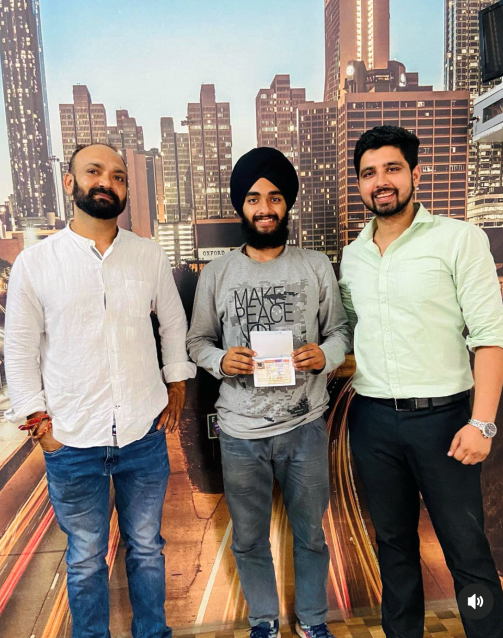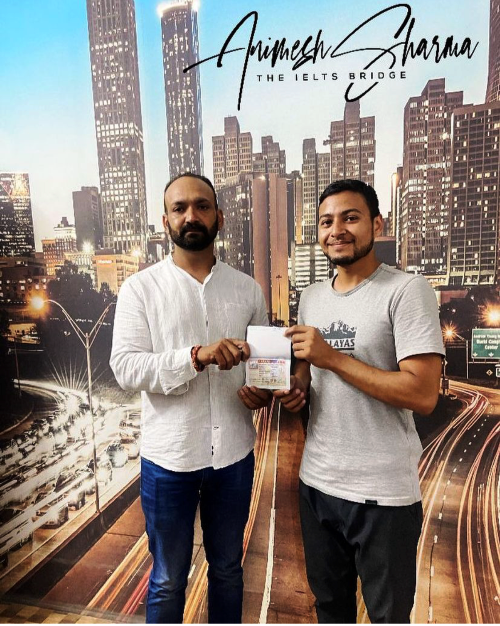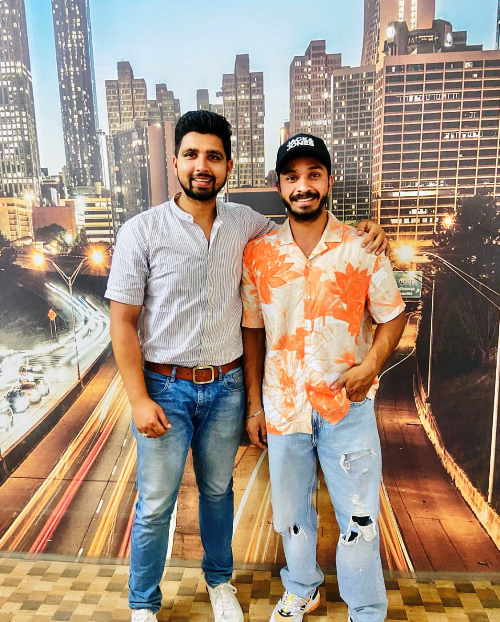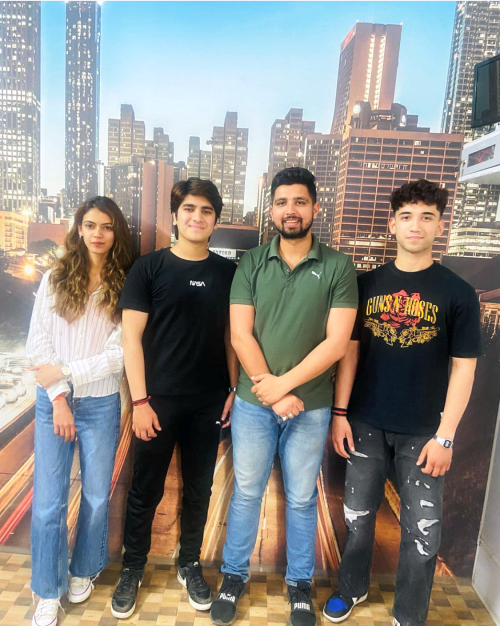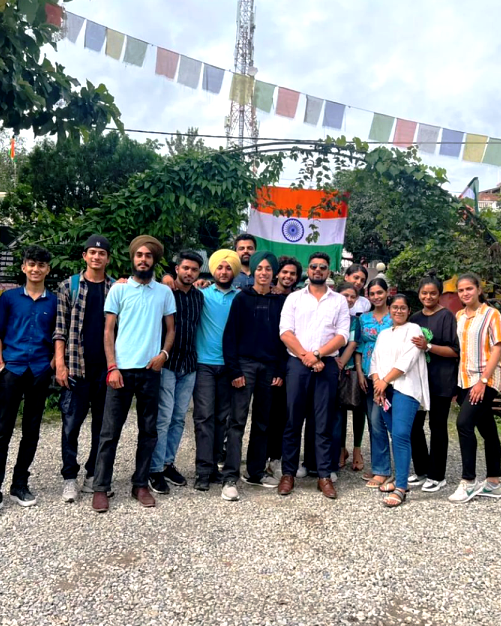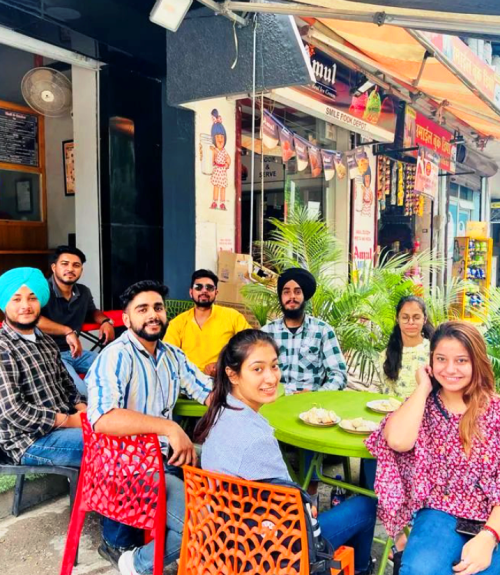Section 1: The Guardian Newspaper’s Travel Photography Competition
Questions 1-8: TRUE, FALSE, NOT GIVEN
[In this type of question, candidates are asked to find out whether:
The statement in the question agrees with the information in the passage – TRUE
The statement in the question contradicts with the information in the passage – FALSE
If there is no information on this – NOT GIVEN
For this type of question, you can divide each statement into three independent pieces and make your way through with the answer.]
Question 1: This is the first year that The Guardian has run a travel photography competition.
Keywords for this question: first year, has run, a travel photography competition,
In the first paragraph, the writer of the text says, “The photo competition is back, giving you another chance to win an incredible trip to Swedish Lapland.”
Here, The photo competition is back, giving you another chance = this is NOT the first year, there has been such competition before,
So, the answer is: FALSE
Question 2: Any photograph for the competition must have been taken on an overseas trip.
Keywords for this question: any photograph, must have been taken on, overseas trip,
In the second paragraph the writer says in lines , “ . . … .. . It’s an opportunity for you to capture the essence of the journeys you make, whether far afield or close to home, and for us to showcase your work online. .. . .. .”
Here, whether far afield or close to home = can be taken on an overseas trip OR can be taken anywhere close to home,
So, the answer is: FALSE
Question 3: The end-of-year exhibition in London is free for the public to attend.
Keywords for this question: end-of-year exhibition, London, free for the public, to attend,
In paragraph no. 2, in lines 4-7, the writer says, “ . .. .. . . .. The winner of each month’s competition will also see their shot mounted and displayed in the end-of-year exhibition for the public at The Guardian ‘s offices in London. Once the exhibition is finished, each monthly winner will receive a framed copy of their shot to place with pride on their own wall.”
Here, we DO NOT FIND any information on whether the end-of-year exhibition in London is free for the public to attend or not.
So, the answer is: NOT GIVEN
Question 4: The judging panel is made up of a group of journalists and a professional photographer.
Keywords for this question: judging panel, made up of, a group of journalists and a professional photographer,
Paragraph no. 3 has the answer to this question as the writer says here, “There will be a different theme for each month. Members of The Guardian travel writing team, and photographer Michael Ryan of Fotovue.com will judge the monthly entries and the overall winner.”
Here, Members of The Guardian travel writing team, and photographer Michael Ryan = a group of journalist and a professional photographer,
So, the answer is: TRUE
Question 5: The trip to Swedish Lapland will only be offered to one winner.
Keywords for this question: trip to Swedish Lapland, will only be offered, to one winner,
The first lines of paragraph no. 5 say, “The overall winner (chosen from the 12 monthly winners) will go on an amazing four night trip to Swedish Lapland. .. .. .”
Here, The overall winner = one winner, will go on an amazing four night trip to Swedish Lapland = the trip to Swedish Lapland,
So, the answer is: TRUE
Question 6: Every activity on the trip is focused on improving photography techniques.
Keywords for this question: every activity, trip, focused on, improving, photography techniques,
In the fifth paragraph, the final lines say, “ . .. . .. . Each day has a specific focus. The trip includes: winter light photography workshops, an image editing workshop, a night photography course, and an action photography workshop.”
Here, the phrases photography workshops & editing workshop suggest that all the activities on the trip are focused on how to improve photography techniques.
So, the answer is: TRUE
Question 7: Anyone going on the trip may take some of the cold weather clothing home at the end of the trip.
Keywords for this question: anyone going on the trip, may take, cold weather clothing, home, end of the trip,
In the sixth paragraph, the writer says, “ .. .. .. Included in the prize: return flights from the UK, four nights’ accommodation with full board, cold weather clothing for the duration of the trip – thermal overalls, winter boots, gloves, hats and woollen socks – fully qualified wilderness guides, and instructors.”
Here, Included in the prize & cold weather clothing for the duration of the trip means NOT some BUT all of the cold weather clothing can be taken home as a prize.
So, the answer is: FALSE
Question 8: Articles written about the trip may be changed before being published.
Keywords for this question: articles, written about the trip, may be changed, before being published,
The writer also says in the final paragraph, “ . . .. . . . . The Guardian reserves the right, however, to modify your report and photos as necessary. .. . …”
Here, The Guardian reserves the right .. . . .. . to modify = The Guardian authority can change the articles when necessary,
So, the answer is: TRUE
Running headphones
Identifying information
[This question asks you to find information from the passage and write the number of the paragraph (A, B, C or D … .. ) in the answer sheet. Now, if the question is given in the very first part of the question set, I’d request you not to answer them. It’s mainly because this question will not follow any sequence, and so it will surely kill your time. Rather, you should answer all the other questions first. And just like List of Headings, only read the first two lines or last two lines of the expected paragraph initially. If you find the answers, you need not read the middle part. If you don’t find answers yet, you can skim the middle part of the paragraph. Keywords will be a useful matter here.]
Question 9: These headphones would suit someone who doesn’t mind spending a lot to get good quality.
Keywords for this question: would suit, doesn’t mind spending a lot, to get good quality,
In the description of Powerbeats 2, the writer says in the beginning, “If money is not an issue, then these are definitely worth considering. .. . . .”
Here, If money is not an issue = would suit someone who doesn’t mind spending a lot,
So, the answer is: G (Powerbeats 2)
Question 10: The battery on these headphones has a surprisingly long life.
Keywords for this question: battery, has, surprisingly long life,
In the description of Plantronics Backbeat Fit, the writer says in the final lines, “ . . .. … As well as providing reasonably clear sound they will also last a remarkable eight hours on a single charge.”
Here, last a remarkable eight hours on a single charge = the battery . … has a surprisingly long life,
So, the answer is: A (Plantronics Backbeat Fit)
Question 11: It is possible to keep in contact with other people while using these headphones.
Keywords for this question: possible, keep in contact with other people, while using,
In the description of Sennheiser CX685 Sports, the writer says in the middle, “ . .. . .. have a handy remote and a mic for phone calls. .. … .”
Here, have a handy remote and a mic for phone calls = possible to keep in contact with others while using these headphones,
So, the answer is: B (Sennheiser CX685 Sports)
Question 12: Although these headphones are cheaper than most, music sounds quite good through them.
Keywords for this question: although, cheaper than most, music, sounds quite good,
In the description of Betron B7505, the writer says, “If you’re on a tight budget, it can always feel risky buying a bottom of the market pair of headphones, but with these you needn’t worry. Not only do they provide fair sound quality,. .. .. . .”
Here, If you’re on a tight budget .. . .. you needn’t worry = these headphones are cheaper than most, they provide fair sound quality = music sounds quite good through them,
So the answer is: E (Betron B7505)
Question 13: These headphones are very strong and do not require gentle handling.
Keywords for this question: very strong, do not require, gentle handling,
In the description of Plantronics Backbeat Fit, the writer says in the beginning, “These headphones are really tough so you don’t need to worry about just throwing them into your bag before or after a workout. .….. .”
Here, really tough so you don’t need to worry about just throwing them into your bag = very strong and do not require gentle handling,
So the answer is: A (Plantronics Backbeat Fit)
Question 14: These headphones allow users to move around their playlist of music easily while they are exercising.
Keywords for this question: allow users, move around, playlist of music, easily, while, exercising,
In the description of Happy Plugs, the writer says, “ . .. . . . They also come with a handy remote built into the cable to skip and pause songs with while you work out.”
Here, a handy remote built into the cable to skip and pause songs with while you work out = allow users to move around their playlist of music easily while they are exercising,
So the answer is: F (Happy Plugs)
Section 2: A Case Study of a risk assessment for general office cleaning
Questions 15-21: Completing FLOW-CHART with ONE WORD ONLY:
In this type of question, candidates are asked to write ONE WORD ONLY to complete some notes on the given flow-chart. For this type of question, first, skim the passage to find the keywords in the paragraph concerned with the answer, and then scan to find the exact word.
[TIPS: Here, scanning technique will come in handy. Target the keywords of the questions to find the answers. Remember to focus on Proper nouns, random Capital letters, numbers, special characters of text etc.]
Title of the flow chart: Stages followed by manager in carrying out risk assessment
Question 15: He talked to health and safety ____________ about the risks.
Keywords for this question: talked to, health and safety, about the risks,
In the second paragraph, the author of the text says, “To identify the hazards, the cleaning service manager visited the office complex and walked through the areas where cleaning staff would be working, noting things that might pose potential risks. Following this, he consulted the health and safety representatives of the cleaning service about these risks, taking into account the needs of any particular staff members, such as whether they were pregnant or aged under 18.”
Here, consulted = talked to,
So, the answer is: representatives
Question 16: At a meeting, he talked to the client company about
- the policy of the company regarding ____________ (e.g. clear walkways)
Keywords for this question: a meeting, talked to, client company, about, policy, e.g. clear walkways,
In paragraph no. 3, take a look at lines 1-4, “In order to gather further information, he then had a meeting with the client company during which a number of issues were discussed. These included the client company’s own standard of housekeeping, such as the immediate clearing up of spills and keeping walkways clear, . .. . .. . ”
Here, had a meeting with the client company = talked to the client company, client company’s own standard = the policy of the company, keeping walkways clear = e.g. clear walkways,
So, the answer is: housekeeping
Question 17:
- procedures to be followed in case of a ____________
Keywords for this question: procedures, to be followed, in case of, a,
Take a look at lines 2-4 in paragraph no. 3, “ . . .. . .. . These included the client company’s own standard of housekeeping, such as the immediate clearing up of spills and keeping walkways clear, as well as the action to be taken if a fire broke out. .. . .. . ”. . .”
Here, action to be taken if = procedures to be followed in case of,
So, the answer is: fire
Question 18:
- facilities available to cleaners (e.g. space available for ____________ )
Keywords for this question: facilities available, to cleaners, e.g. space available,
Lines 5-7 of the third paragraph say, “ . . . .. He also established what facilities and equipment would be available to the cleaners, including the amount of storage space available, as well as the availability of sinks and taps, etc.. .. .”
So, the answer is: storage
Question 19:
- a way of ____________ risks and hazards.
Keywords for this question: a way of, risk and hazards,
The final few lines of paragraph no. 3 say, “.. . .. and agreed on a method of reporting near-miss accidents and risks discovered by cleaners (e.g. damaged floor tiles).”
Here, a method of = a way of, near-miss accidents and risks = risks and hazards,
So, the answer is: reporting
Question 20:
He compared these to information that the HSE provided on its ____________ .
Keywords for this question: compared, these, to information, HSE provided, on its,
The answer can be found in paragraph no. 4. Here, in the final lines, the author of the text writes, “ .. . . .. The manager then compared these to the good practice guidance set out on the HSE’s website and identified any areas where improvement was needed.”
Here, The manager then compared these = He compared these, to the good practice guidance = to information, set out on = provided on,
So, the answer is: website
Question 21:
He displayed a copy of the risk assessment inside a ___________ available to all cleaning staff.
Keywords for this question: displayed, a copy of, risk management, inside, a, available, all cleaning staff,
In the final paragraph, the writer of the text says in the final lines, “ . .. .. Finally, to ensure that all the cleaning staff had access to a copy of the risk assessment, the manager pinned a copy in the cupboard where cleaning equipment was kept.”
Here, the manager pinned a copy = He displayed a copy, all the cleaning staff had access = available to all cleaning staff,
So, the answer is: cupboard
Preparing for a virtual job interview
Questions 22-27: Completing sentences with ONE WORD ONLY:
In this type of question, candidates are asked to write ONE WORD ONLY to complete sentences on the given topic. For this type of question, first, skim the passage to find the keywords in the paragraph concerned with the answer, and then scan to find the exact word.
[TIPS: Here scanning technique will come in handy. Target the keywords of the questions to find the answers. Remember to focus on Proper nouns, random Capital letters, numbers, special characters of text etc.]
Question 22: Some companies prefer to interview job applicants digitally because of lower ________ .
Keywords for this question: Some companies, prefer, interview job applicants, digitally, because, lower,
In paragraph no. 1, the writer says in the first lines, “Businesses are always looking for new ways to increase efficiency and profits. For example, organisations often reduce costs by conducting virtual job interviews. .. ..”
Here, organisations = some companies, reduce = lower, conducting virtual job interviews = prefer to interview job applicants digitally,
So, the answer is: costs
Question 23: As with the standard recruitment process, virtual recruitment opens with __________ .
Keywords for this question: As with, standard recruitment process, virtual recruitment, opens with,
In the ‘How a virtual interview is the same’ section, the first lines of the first paragraph say, “The typical interview process usually entails multiple steps. First, there is screening, lasting about thirty minutes. .. … .”
Here, The typical interview process = the standard recruitment process, First = opens with,
So, the answer is: screening
Question 24: Applicants should read any details about the advertised post carefully and pick out important _____________ which they can discuss if necessary.
Keywords for this question: Applicants, should read, any details, advertised post, carefully, pick out, important, which, can discuss, if necessary,
Again, in the ‘How a virtual interview is the same’ section, the first lines of the second paragraph say, “Virtual interviews follow the same steps so you’ll need to focus on the same core topics. Identify what the critical topics are based on the job description and prepare to talk about them. If you can, gather inside information so you can impress interviewers with your knowledge.”
Here, Identify = pick out, critical = important, prepare to talk about them = they can discuss if necessary,
So, the answer is: topics
Question 25: It is a good idea for applicants to check if they can be clearly understood when they use a ______________ .
Keywords for this question: a good idea, for applicants, check, if they can be clearly understood, when, use a,
In the ‘How a virtual interview is different’ section, the first lines in the second paragraph say, “Modern technology is great when it works, but a pain when it doesn’t. So, it’s wise to check you can operate your webcam, especially if you don’t use it often. Test the headset too and find out how intelligible your voice sounds.”
Here, Test = check, find out how intelligible your voice sounds = to check if they can be clearly understood,
So, the answer is: headset
Question 26: Applicants may not be familiar with the ___________ that the person conducting the interview will use, so they should try it out.
Keywords for this question: Applicants, may not be familiar with, the person, conducting, interview, will use, so, should try it out,
Again in the ‘How a virtual interview is different’ section, the final lines in the second paragraph say, “ .. .. .. . It’s also wise to establish what software the interviewer is going to work with and give it a trial run.”
Here, interviewer = the person conducting the interview, is going to work with = will use, give it a trial run = should try it out,
So, the answer is: software
Question 27: It is very useful to go through a _____________ of the interview, with someone playing the part of the interviewer.
Keywords for this question: very useful, go through, a, of the interview, with someone playing, part of the interviewer,
In the ‘How a virtual interview is different’ section, the fourth paragraph says, “The most important part of your preparation is to run through everything first as best you can. Have a friend conduct a rehearsal with you before the big day. This will help you know how to behave in front of the camera.”
Here, a friend = someone playing the part of the interviewer, run through = go through, This will help you know how to behave in front of the camera = it is very useful,
So, the answer is: rehearsal
Section 3:Tuning up your leadership skills
Questions 28-33: Identifying information
[This question asks you to find information from the passage and write the number of the paragraph (A, B, C or D … .. ) in the answer sheet. Now, if the question is given in the very first part of the question set, I’d request you not to answer them. It’s mainly because this question will not follow any sequence, and so it will surely kill your time. Rather, you should answer all the other questions first. And just like List of Headings, only read the first two lines or last two lines of the expected paragraph initially. If you find the answers, you need not read the middle part. If you don’t find answers yet, you can skim the middle part of the paragraph. Keywords will be a useful matter here.]
Question 28: a summary of the different aspects of leadership that are covered in the study
Keywords for this question: different aspects of leadership, covered in the study,
The answer can be found in the second paragraph of section B. Here, the writer says, “The research focused on the way that these jazz greats created and ran their musical enterprises. In particular, Ucbasaran and Lockett focused on three specific areas of leadership activity: team formation, team coordination and team turnover.”
Here, focused on three specific areas of leadership activity = different aspects of leadership that are covered in the study,
So, the answer is: B
Question 29: a description of how band leaders sometimes passed on their leadership skills to others
Keywords for this question: how, band leaders, sometimes passed on, leadership skills, to others,
In section E, the first few lines in the second paragraph say, “A common reason for the jazz musicians leaving was that they felt sufficiently qualified to go and run another band. The three band leaders were understanding about this, particularly as it was a process they had also been through. In some cases, in particular with Art Blakey, they actively encouraged and coached team members to become leaders. . .. .
Here, they = band leaders, actively encouraged and coached team members to become leaders = sometimes passed on their leadership skills to others,
So, the answer is: E
Question 30: a summary of the backgrounds of the band leaders chosen for the study
Keywords for this question: backgrounds of the band leaders, chosen for the study,
In section B, the first paragraph provides short background information of the band leaders chosen for the study, “The authors decided to focus on three of the best known names in jazz – Duke Ellington, Miles Davis and Art Blakey. American composer Duke Ellington was a pioneering jazz orchestra leader from the 1920s through to the 1970s. Trumpet player Miles Davis was instrumental in the development of a number of new jazz styles, including bebop and jazz fusion. Jazz drummer Arthur ‘Art’ Blakey became famous as the leader of his band the Jazz Messengers.”
Here, Duke Ellington, Miles Davis and Art Blakey = the band leaders chosen for the study,
So, the answer is: B
Question 31: examples of ways in which one band leader encouraged his musicians to be more creative
Keywords for this question: ways, one band leader, encouraged, his musicians, to be more creative,
In section D, lines 3-7 of the second paragraph gives a description of how Miles Davis encouraged his musicians to be more creative, “ . .. .. As Ucbasaran and Lockett note, Miles Davis discouraged band members from rehearsing in case it led to musical cliches from over-practice. Similarly, he often asked his musicians to play a piece in an unusual key, so they did not rely on learned fingering patterns. The performers were not left entirely to their own devices though. .. ..”
Here, Miles Davis = one band leader, discouraged band members from rehearsing in case it led to musical cliches from over-practice = encouraged his musicians to be more creative,
So, the answer is: D
Question 32: an overview of the main similarities between the work of business people and jazz musicians
Keywords for this question: main similarities between, the work of business people and jazz musicians,
In section A, the author of the text mentions in the second paragraph, “ . .. .. For a start, jazz bands are synonymous with creativity, improvisation and innovation, all essential ingredients for entrepreneurship. Jazz groups and their members often operate in uncertain and dynamic environments, characterised by rapid change. Yet through collective endeavour many jazz bands find their own structure and harmony and become profitable enterprises – both creatively and commercially.”
Here, jazz bands are synonymous with creativity, improvisation and innovation, all essential ingredients for entrepreneurship = main similarities between the work of business people and jazz musicians,
So, the answer is: A
Question 33: a description of two contrasting ways of leading a team
Keywords for this question: two contrasting ways, leading a team,
In section D, we find two paragraphs. The final lines of the first paragraph and the opening lines of the second paragraph give a short description of two contrasting ways of leading a team.
“ .. . . .. . . . .. . . The team leader can assume a number of different roles when helping the team achieve its objectives. Some leaders are very directive, detailing what tasks they want team members to perform, and how they want them to go about those tasks. (One way)
But that was not the approach Ellington, Davis and Blakey adopted. Instead, these leaders acted more as facilitators, empowering the musicians to collectively coordinate their behaviour and action to produce the desired outcome. (contrasting way).. . .. . . .. . . .”
So, the answer is: D
Questions 34-36: TRUE, FALSE, NOT GIVEN
[In this type of question, candidates are asked to find out whether:
The statement in the question agrees with the information in the passage – TRUE
The statement in the question contradicts with the information in the passage – FALSE
If there is no information on this – NOT GIVEN
For this type of question, you can divide each statement into three independent pieces and make your way through with the answer.]
Question 34: The study by Ucbasaran and Lockett was the first to compare the worlds of music and business.
Keywords for this question: the study, Ucbasaran and Lockett, was the first, compare the worlds of music and business,
In section A, have a look at the first paragraph. “Ever since management expert Peter Drucker compared the job of Chief Executive Officer to that of an orchestra conductor, the business world has been exploring comparisons and inspirations from the world of music. Now Warwick Business School Professors Deniz Ucbasaran and Andy Lockett are hitting all the right notes with their study of famous jazz musicians , Leading Entrepreneurial Teams: Insights From Jazz, providing some essential insights for entrepreneurial team leaders.”
Here, management expert Peter Drucker compared the job of Chief Executive Officer to that of an orchestra conductor = Peter Drucker was the first to compare the worlds of music and business,
So, the study by Ucbasaran and Lockett was NOT the first to compare the worlds of music and business.
So, the answer is: FALSE
Question 35: One reason why jazz musicians were chosen for the research is because the setting in which they work is unpredictable.
Keywords for this question: one reason, why jazz musicians were chosen, for the research, because, the setting in which they work, unpredictable,
The answer can be found in section A, in paragraph no. 2. Here, the writer says in lines 1-5, “Ucbasaran and Lockett (together with Durham Business School Professor Michael Humphries) chose jazz for a number of reasons. For a start, jazz bands are synonymous with creativity, improvisation and innovation, all essential ingredients for entrepreneurship. Jazz groups and their members often operate in uncertain and dynamic environments, characterised by rapid change. .. .. . . .. .”
Here, Jazz groups and their members often operate in uncertain and dynamic environments, characterised by rapid change = the setting in which they work is unpredictable,
So, the answer is: TRUE
Question 36: The researchers decided to cover only certain aspects of leadership.
Keywords for this question: the researchers, decided to cover, only certain aspects of leadership,
The answer lies in section B, paragraph no. 2. The writer of the text says here, “The research focused on the way that these jazz greats created and ran their musical enterprises. In particular, Ucbasaran and Lockett focused on three specific areas of leadership activity: team formation, team coordination and team turnover.”
Here, three specific areas of leadership activity = only certain aspects of leadership,
So, the answer is: TRUE
Questions 37-40: Multiple choice questions
[This type of question asks you to choose a suitable answer from the options using the knowledge you gained from the passage. Generally, this question is found as the last question set in most passages so you should not worry much about it. Finding all the answers for previous questions gives you a good idea about these questions.]
Question 37: When assembling their teams, the band leaders all prioritised players
Keywords for this question: when assembling, teams, the band leaders, all prioritised players,
The answer is found in section B in paragraph no. 3, as the writer explains here, “There were strong similarities in the processes the band leaders used to assemble their diverse teams of talent. In particular, they looked for musicians with a different sound or way of playing, one that was unique to that band member and would improve the overall sound of the band. That feature was as much bound up with the personality of the individual musician as it was to do with their technical proficiency.”
Here, the band leaders used to assemble their diverse teams of talent = assembling their teams,
they looked for musicians with a different sound or way of playing, one that was unique to that band member = the band leaders all prioritised players who had an individual style of their own.
So, the answer is: C (who had an individual style of their own.)
Question 38: What obstacle might jazz leaders face in reducing destructive conflict among team members?
Keywords for this question: what obstacle, might jazz leaders face, in reducing, destructive conflict, among team members,
In section C, the first paragraph gives the answer as the writer explains here the similarities between destructive and productive conflict, “ .. . .. . .. .. . Traditional team leadership theory suggests that to get the best team performance the leader should foster conflict that is productive in its effects, while minimising destructive conflict. But this is difficult when the sources of productive and destructive conflict are the same; that is, differences in personality and thinking. . . .. .. . .”
Here, the sources of productive and destructive conflict are the same = if destructive conflict among team members is reduced, jazz leaders may also reduce productive conflict in the process,
So, the answer is: A (They may also reduce productive conflict in the process.)
Question 39: What approach to group coordination was shared by Ellington, Davis and Blakey?
Keywords for this question: what approach to group coordination, was shared, by Ellington, Davis and Blakey,
In section D, the final lines of paragraph no. 2 say, “ . .. . . . . All three leaders created a general framework within which team members could work, providing guidance but also the freedom to explore, express and make mistakes.”
Here, All three leaders = Ellington, Davis and Blakey, created a general framework = provided a structure, within which team members could work .. . .. . . the freedom to explore, express and make mistakes = within which musicians could express themselves,
So, the answer is: C (They provided a structure within which musicians could express themselves.)
Question 40: Ucbasaran and her colleagues found that the high turnover of members in jazz bands
Keywords for this question: Ucbasaran and her colleagues, found, the high turnover of members, in jazz bands,
In section E, the first paragraph talks about the benefits of the high turnover, “The third aspect of leadership behaviour that Ucbasaran and her colleagues looked at was managing team turnover – people joining and leaving the team. . .. . . .. . . .. . .. Yet the high turnover of team members, despite the resulting loss of knowledge and skills, was seen in a positive light. That was partly because of the advantages of getting a fresh shot of knowledge, ideas and creativity when new members joined.”
Here, was seen in a positive light = was welcomed by the band leaders,
because of the advantages of getting a fresh shot of knowledge, ideas and creativity when new members joined = for the benefits it brought,
So, the answer is: B (was welcomed by band leaders for the benefits it brought.)



